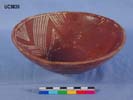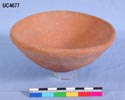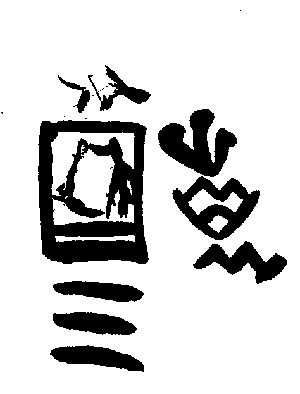Later Kaiser (Kaiser 1957) refined the sequence dates and divided the Naqada period into several Stufen ('steps' = phases).
Kaiser's system remains in use with some slight modifications (see the most recent discussion: Hendrickx 1996):
Kaiser also introduced for his Stufen several subdivisions:
Naqada I a-b-c (about 4000 - 3500 BC)
Naqada II a-b-c (about 3500 - 3200
BC)
Naqada III a-b-c (about 3200 - 3000
BC)
|
Naqada I Black-topped pottery is the typical ware painted pottery appears
|
|
Naqada II New pottery types appear: Marl pottery, sometimes decorated
'rough' pottery Considerable development in techniques
|
|
Naqada III Cylinder jars are characteristic grave goods. the first writing appears
|





